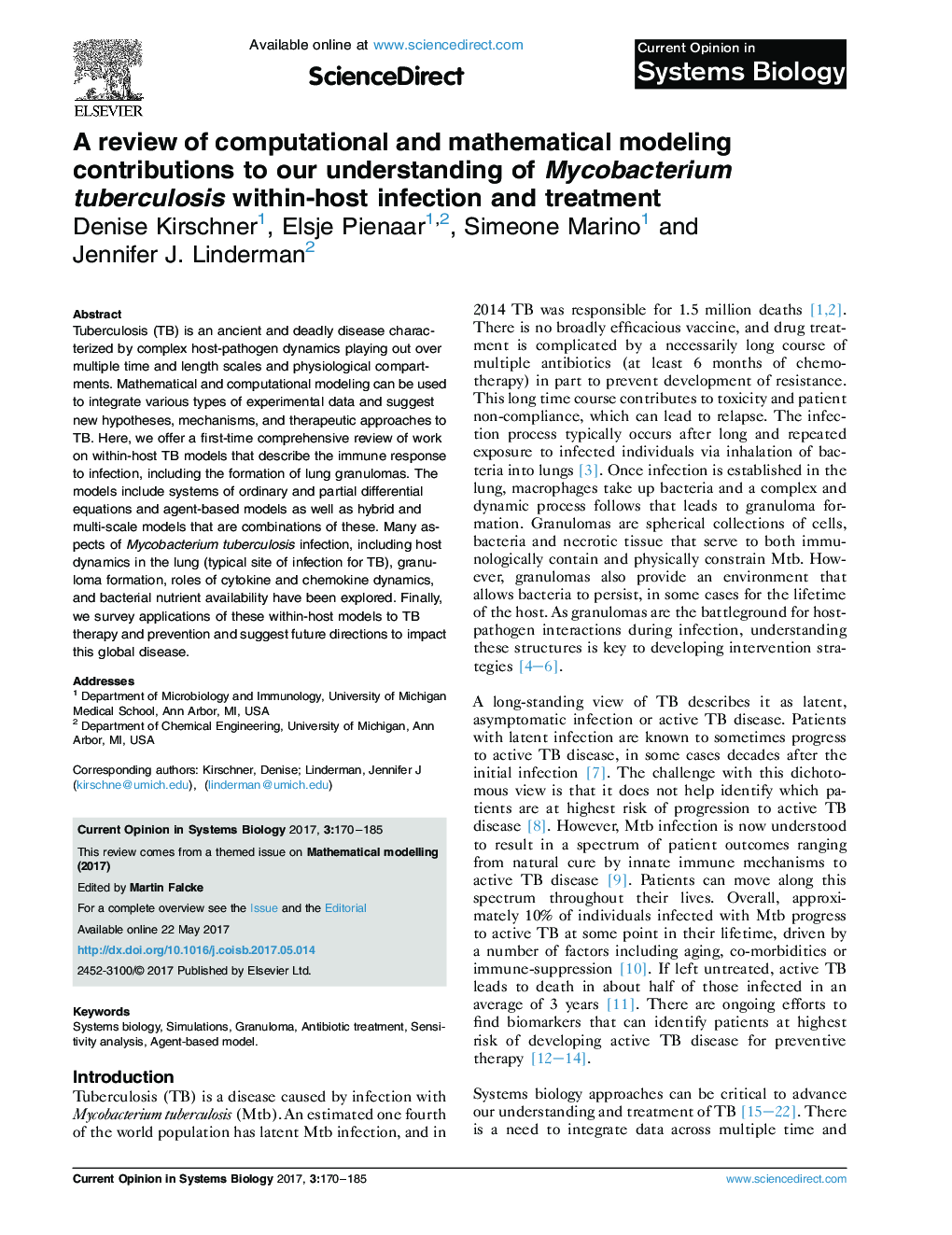| Article ID | Journal | Published Year | Pages | File Type |
|---|---|---|---|---|
| 8918157 | Current Opinion in Systems Biology | 2017 | 16 Pages |
Abstract
Tuberculosis (TB) is an ancient and deadly disease characterized by complex host-pathogen dynamics playing out over multiple time and length scales and physiological compartments. Mathematical and computational modeling can be used to integrate various types of experimental data and suggest new hypotheses, mechanisms, and therapeutic approaches to TB. Here, we offer a first-time comprehensive review of work on within-host TB models that describe the immune response to infection, including the formation of lung granulomas. The models include systems of ordinary and partial differential equations and agent-based models as well as hybrid and multi-scale models that are combinations of these. Many aspects of Mycobacterium tuberculosis infection, including host dynamics in the lung (typical site of infection for TB), granuloma formation, roles of cytokine and chemokine dynamics, and bacterial nutrient availability have been explored. Finally, we survey applications of these within-host models to TB therapy and prevention and suggest future directions to impact this global disease.
Keywords
Related Topics
Physical Sciences and Engineering
Computer Science
Computer Science (General)
Authors
Denise Kirschner, Elsje Pienaar, Simeone Marino, Jennifer J. Linderman,
